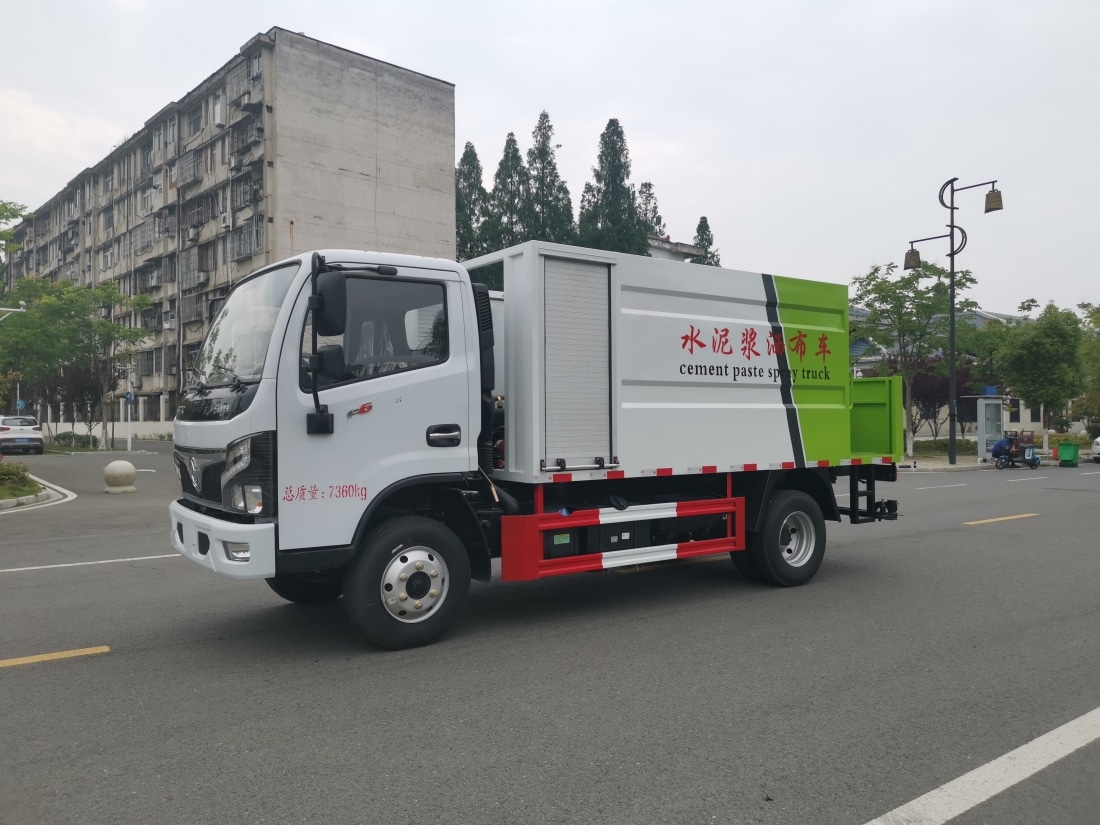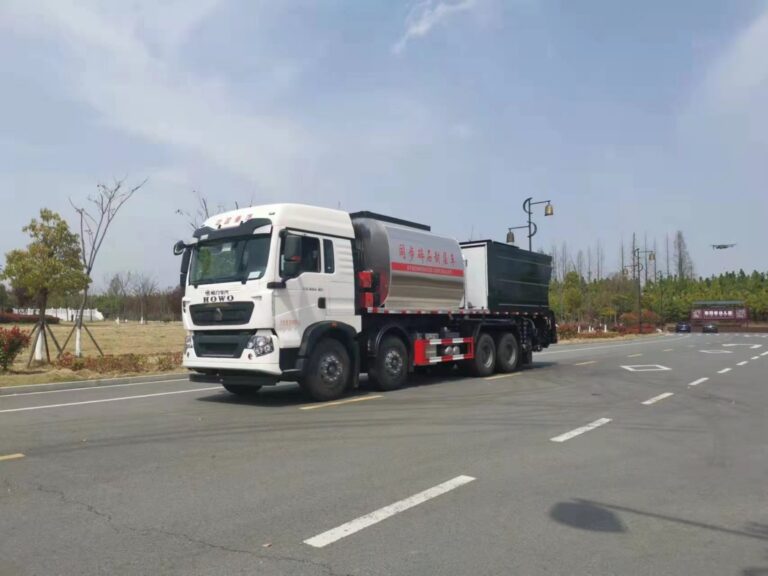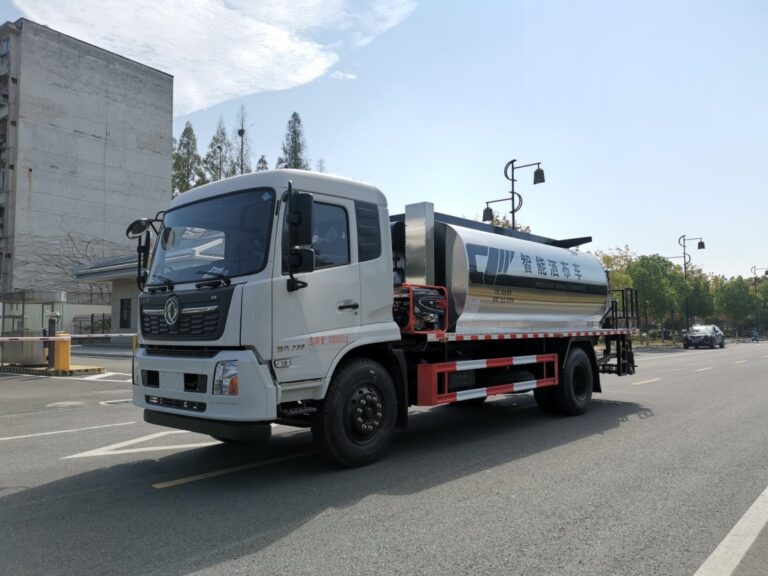Cement Slurry Distributor Instruction Manual
I. Foreword
Dear Valued User,
We sincerely thank you for your trust and recognition of the SPV, and for choosing the SPV Cement Slurry Distributor. This manual provides comprehensive information on the performance parameters, maintenance, adjustments, and common troubleshooting for your machine.
It is essential to keep this manual readily available and ensure all relevant personnel read it regularly. Fully utilizing this manual, along with any other accompanying maintenance and operation guides, will help keep your vehicle in optimal condition. This manual is designed to help you operate the machine safely and correctly, and it includes functional descriptions of its important components and systems.
To prevent misunderstandings, please note that this manual employs specific technical terminology. Only trained and qualified personnel are permitted to operate this machine. You must always adhere to the guidelines within this manual and all local safety regulations. Following these instructions will help you quickly familiarize yourself with the machine, avoid malfunctions due to improper operation, enhance reliability, extend its service life, and reduce maintenance costs and downtime.
For information regarding the use, maintenance, and care of the vehicle chassis, please refer to the original factory’s instruction manual, which is provided separately. We kindly ask our esteemed customers to thoroughly read both manuals and strictly follow all operating and maintenance instructions before using this Cement Slurry Distributor.
Our products are continuously being improved and upgraded to meet the evolving needs of our diverse users. Should any content in this manual differ from your actual product, the physical product shall take precedence. Please feel free to contact our company’s after-sales service department for any questions or assistance. We are always eager to serve you. We appreciate your understanding!
II. Product Introduction
Our company has independently developed the Cement Slurry Distributor for high-grade highway construction, specifically for the distribution of cement slurry between upper and lower layers during stabilized base layer construction. This equipment effectively replaces the traditional, labor-intensive method of manually applying cement slurry.
Traditional manual cement slurry application suffers from high labor input and poor distribution uniformity. As labor costs and construction safety protection costs rise, the expense of manual cement slurry application continues to increase. By utilizing a Cement Slurry Distributor, production efficiency can be greatly enhanced, construction speed maximized, and the entire mechanized construction process made more orderly.
Applicable Scope:
This product rapidly and accurately performs the task of distributing cement slurry between the upper and lower layers during stratified paving in high-grade highway construction.
Key Performance Features Include:
- Optimized Overall Layout: Ensures equipment stability while providing ample space for maintenance.
- Compact Structure: Maximizes length utilization for a compact design.
- Efficient Vertical Mixing: Employs vertical agitation for uniform mixing and high efficiency.
- Independent Power System: Features a dedicated working power system that provides strong operational power even when the equipment operates at low travel speeds.
- Modular Design: The upper body can be used as an independent product.
- Integrated Cleaning Function: Includes a self-contained water system for cleaning the interior of the mixing tank and pipelines after each day’s work, preventing residual cement from solidifying and blocking the system.
- Adjustable Spray Bar: The spray bar can be adjusted left and right to ensure optimal distribution. The ground clearance of the spray bar can also be adjusted to achieve the best spraying uniformity.
III. Product Structure
The Cement Slurry Distributor is comprised of the following main components:
- Vehicle Chassis
- Power System
- Mixing Tank (for cement slurry)
- Clear Water Tank
- Subframe
- Cement Slurry Spraying System
- Water System
- Hydraulic System
- Pneumatic & Electrical Control System
IV. Technical Characteristics
The overall layout is rational and compact, making full use of length to increase the mixing tank’s volume. It features vertical agitation for uniform mixing and uses fan-shaped nozzles for perfect spraying results, ensuring high efficiency. An independent power system can also be added, allowing the upper structure to be used as a standalone product.
1. Process Principle
Before base layer construction, a cement slurry with a specific cement content is prepared. The distributor then sprays this cement adhesive slurry onto the sub-base layer, allowing it to penetrate and bond the base layer and sub-base layer together through its adhesive force, thereby improving the overall integrity. This technology offers convenient and flexible operation, a simple process, low engineering cost, and fast construction speed, ensuring both project quality and progress. It effectively solves the inter-layer bonding problem between the base and sub-base layers, making it suitable for base layer construction on all grades of highways to ensure the overall performance between layers.
2. Pre-Construction Preparation
Construction can begin after the sub-base layer has been inspected and approved by the supervising engineer. Before commencing work, a comprehensive inspection of the proposed construction area must be carried out. Any non-conforming areas should be rectified with appropriate measures. All surface debris must also be removed.
- Inspect the sub-base’s elevation, width, cross slope, flatness, compaction, and crown to ensure they meet design requirements. For any sections that do not meet the compaction and deflection test results required by the design, appropriate remedial measures must be taken based on specific conditions to bring them up to standard.
- Carefully fill and compact any depressions and potholes on the sub-base to achieve a level surface. Before use, check that all systems of the distributor are functioning correctly and perform a test spray to ensure the accuracy of the cement adhesive slurry distribution rate per unit area.
3. Spraying Process
Based on the required cement adhesive slurry spray volume (cement content of cement slurry is 0.385 kg/m²), and spray width, set the spraying parameters. Adjust the spray height and spray angle. Check that the system and pipeline system are functioning normally without faults. Once all checks are cleared, proceed with spraying.
The distributor should move forward at a uniform speed, guided by markers. When the spray pipe enters the spraying area, open the valve switch to begin spraying. Once spraying is complete, sound the horn, close the valve, and the vehicle should move slightly forward before stopping. After cement adhesive slurry has been sprayed, vehicle traffic is strictly prohibited.
V. Quality Control
- Before construction, organize all personnel to thoroughly study contract documents and technical specifications, familiarize themselves with design drawings and construction plans, and conduct technical briefings to ensure every construction worker is well-informed.
- The project management department shall appoint a quality inspection engineer, and the construction team shall appoint a quality inspector. The quality inspector must track and inspect every process step.
- Pre-spraying inspection work: any non-conforming items must be promptly rectified.
- The cement content in the cement adhesive slurry must meet the standard; otherwise, it will directly affect the adhesive strength of the cement slurry.
- After spraying, wait for slight initial setting before paving the base layer. During this period, pedestrian and vehicle traffic is strictly prohibited.
VI. Safety Measures
- All operations must comply with the requirements of the “Safety Technical Regulations for Highway Engineering Construction” of the People’s Republic of China industry standards.
- The project department shall establish a safety production leading group, with the project manager as the primary responsible person, to implement the safety production responsibility system.
- Develop detailed safety construction technical plans and conduct safety training for all participating personnel to familiarize them with the key safety points and precautions for each work step.
- Establish a regular safety production inspection system and hold regular safety production meetings to eliminate potential safety hazards in their infancy.
- The cement slurry distributor must have a dedicated person in command.
- Strengthen safety post-training and provide safety knowledge education to all personnel on duty. Personnel in special industries must be certified to work.
VII. Environmental Protection Measures
- Strictly comply with national and local government laws, regulations, and relevant documents concerning environmental protection, and establish an internal enterprise environmental protection system.
- All domestic and production waste generated during construction, such as waste mixed wastewater and waste materials, shall be centrally collected and promptly cleaned, and strictly prohibited from being discharged into rivers.
VIII. Resource Conservation
- In response to national energy saving and consumption reduction policies, the use of specialized cement slurry distributors can effectively reduce the waste of resources and energy.
- Rational allocation and use of materials can reduce material waste and ensure their full utilization.
- Spraying cement adhesive slurry between layers of cement-stabilized gravel base can improve the overall performance of the project, prevent the occurrence of defects, reduce post-traffic maintenance, and thus reduce material usage.
IX. Construction Operations
Proper use of the Cement Slurry Distributor and adherence to all operating procedures will maximize machine efficiency, maintain good mechanical performance, and thereby improve productivity and reduce construction costs.
1. Pre-Operation Preparation
- Check that the vehicle’s steering, braking, electrical, and running gear systems are functioning normally.
- Check that the engine oil, fuel, hydraulic oil, and coolant are sufficient, and that there are no leaks.
- Check that the rear spray pipes and pipe filters are clear, and that the cement slurry pump can rotate.
2. Construction Operation
- Fill the cement mixing tank with clear water; fill the clear water tank with clear water.
- Turn on the main circuit breaker – turn on the main power switch on the front control box.
- Start the vehicle engine until air pressure reaches 0.6 MPa or above. Depress the clutch and engage the PTO switch.
- Turn on the agitation switch and check if agitation is working normally.
- Add dry powder cement to the cement slurry tank (Note: Do not add any lumpy or partially solidified cement). The maximum ratio should not exceed 50% of the water volume.
- Once the cement slurry is evenly mixed, unfold the two auxiliary arms of the rear spray bar, as shown in the figure. (Figure reference needed here)
- Go to the front control box, open the cement slurry valve and the spray pump. Simultaneously engage a gear and drive the vehicle forward at a uniform speed to begin spraying, as shown in the figure. (Figure reference needed here)
- Maintain uniform speed until the endpoint. Close the cement slurry valve and spray pump. Spraying operation ends. Do not change gears during spraying operation. Agitation can be stopped. If the cement slurry is not completely sprayed in one go, you must either re-engage agitation for subsequent spraying or open the manual valve at the bottom of the tank to discharge the slurry completely.
- Immediately perform cleaning operations after spraying.
3. Cleaning Operation
- Open the clear water valve and spray pump, allowing clear water to clean the pipelines, cement slurry pump, spray bar, and nozzles.
- Close the clear water valve and spray pump, then open the manual valve at the bottom of the cement slurry tank.
- Turn on the cleaning pump and use the cleaning gun to clean the inner walls and bottom of the cement slurry tank.
- Use the cleaning gun to clean the pipelines, spray bar, cement slurry tank, and all external components of the entire vehicle.
- Turn off the cleaning pump.
- Depress the clutch and disengage the PTO switch. Cleaning operation ends.
X. Precautions
- The chassis air pressure must be 0.6 MPa or above before depressing the clutch and engaging the PTO; otherwise, it will damage the PTO and gearbox.
- Do not engage the PTO or agitation system while the vehicle is traveling at high speeds; otherwise, it will damage the hydraulic system.
- After each spraying operation, the inside of the cement slurry tank, pipelines, spray bar, and nozzles must be thoroughly cleaned to prevent blockages in the pipeline filter and spray bar.
- Before spraying, the cement slurry in the tank must be evenly mixed. Do not spray if there is any sedimentation, as this will block pipelines, filters, and the spray bar.
- Regularly check if the filter screen is clogged; otherwise, it will affect construction quality.
- For the first operation period exceeding three months (300 hours), replace the hydraulic oil (Great Wall Brand No. 68 anti-wear hydraulic oil) and the suction filter screen. Thereafter, it can be replaced every two years.
- Cement adhesive slurry spraying should be conducted in clear weather conditions.
- The spray volume should be applied uniformly in one pass as per the design. In case of missed areas, manual補洒 (re-spraying) should be performed. After spraying cement adhesive slurry, human and vehicle traffic is strictly prohibited.
- Base layer paving should only commence after the cement adhesive slurry has begun its initial setting, and it should be done as soon as possible after spraying.
- At the end of each day’s construction during winter, be sure to close the cleaning pump valve, unscrew the high-pressure cleaning pump drain screw, and drain all water to prevent freezing damage, as shown in the figure. (Figure reference needed here)
Conclusion
Applying cement slurry between layers of cement-stabilized gravel and crushed stone demonstrates excellent mechanical properties, integrity, and stability, effectively resolving the inter-layer bonding issue between the base and sub-base layers. Utilizing a specialized distributor for construction ensures convenient and flexible operation, guaranteeing both engineering quality and construction progress. Furthermore, it significantly enhances the adhesion of base and sub-base layers, improves overall integrity, strengthens bearing capacity, prevents the occurrence of defects, and is applicable to highway engineering projects of all grades.


